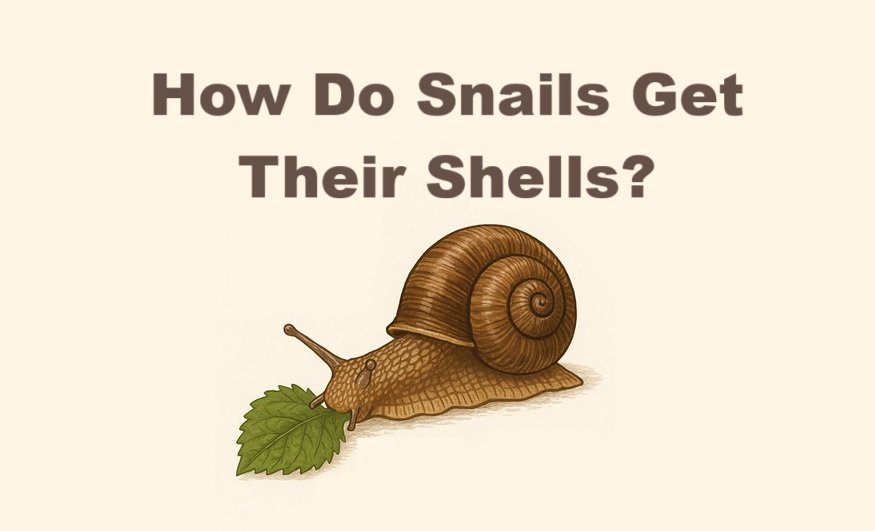
One of the most distinctive and fascinating features of a snail is its spiral shell—a hard, protective structure that seems almost like a house the snail carries on its back. But have you ever wondered how snails get their shells, or if they can leave them like a hermit crab? The truth is even more intriguing than you might expect.
In this article, we’ll explore how snails develop their shells, the biological processes involved, and why the shell is so critical to their survival.
Read This: What Do Snails Eat … and How?
Snails Are Born with Shells
Unlike hermit crabs, snails are not shell borrowers. Instead, they are born with a shell. From the moment they hatch from their eggs, baby snails (called hatchlings) already have a tiny, soft, transparent shell.
This first shell is called the protoconch and is made during embryonic development while the snail is still inside the egg. As the snail grows, so does its shell—layer by layer.
The Shell Grows with the Snail
A snail’s shell is a permanent, living part of its body, not something it can detach or replace. It grows in size by adding calcium carbonate layers at the edge (or lip) of the shell opening.
How the Shell Grows:
- Mantle secretion: The mantle, a specialized tissue in the snail’s body, secretes calcium carbonate.
- Layering: This secretion adds new layers to the outer shell, expanding it as the snail grows.
- Color and texture: Pigments and environmental minerals may also affect shell color and texture.
What Is the Shell Made Of?
A snail’s shell is composed mainly of calcium carbonate, the same material found in eggshells and seashells. The shell also includes proteins and other minerals that make it more flexible and resilient.
The shell has three layers:
- Periostracum – the outer organic layer, often brownish or textured.
- Prismatic layer – a middle layer of columnar crystals.
- Nacreous layer – the innermost, smooth layer (also known as mother-of-pearl in some marine snails).
Why Is the Shell Important?
The snail’s shell is essential for:
- Protection: It shields the soft body from predators and harsh environments.
- Moisture retention: Especially for land snails, it helps prevent dehydration.
- Calcium storage: The shell serves as a reservoir of calcium, which the snail can reabsorb if needed.
Can Snails Regenerate or Repair Their Shells?
Yes, snails can repair minor shell damage as long as their mantle tissue remains intact. They use calcium from their diet or reserves to patch cracks or holes. However, severe damage may be fatal.
Do All Snails Have Shells?
While most snails have external shells, some have reduced or internal shells, and others are shell-less. These are often classified as slugs, though some are considered shell-reduced snails.
For example:
- Land snails – typically have visible, coiled shells.
- Slugs – technically still part of the Gastropoda class, but have internalized or vestigial shells.
- Nudibranchs – marine snails that have lost their shells entirely through evolution.
Shell Shape and Species
The shape, size, and color of a snail’s shell vary widely among species and serve as a key trait for classification.
Some common shell types include:
- Helical (spiral) – most common in land snails.
- Conical – common in marine snails.
- Globular – rounder shapes in freshwater species.
Shell growth also shows environmental adaptations—snails in dry climates often have thicker shells to prevent moisture loss.
Conclusion
Snails are born with their shells and never part with them. These remarkable structures grow with the snail, offering protection, moisture control, and structural support. Made from calcium carbonate and secreted by the snail’s mantle, the shell is a lifelong companion and a biological marvel.
Understanding how snails get their shells not only answers a curious question but also offers insight into their survival and evolution across ecosystems.







